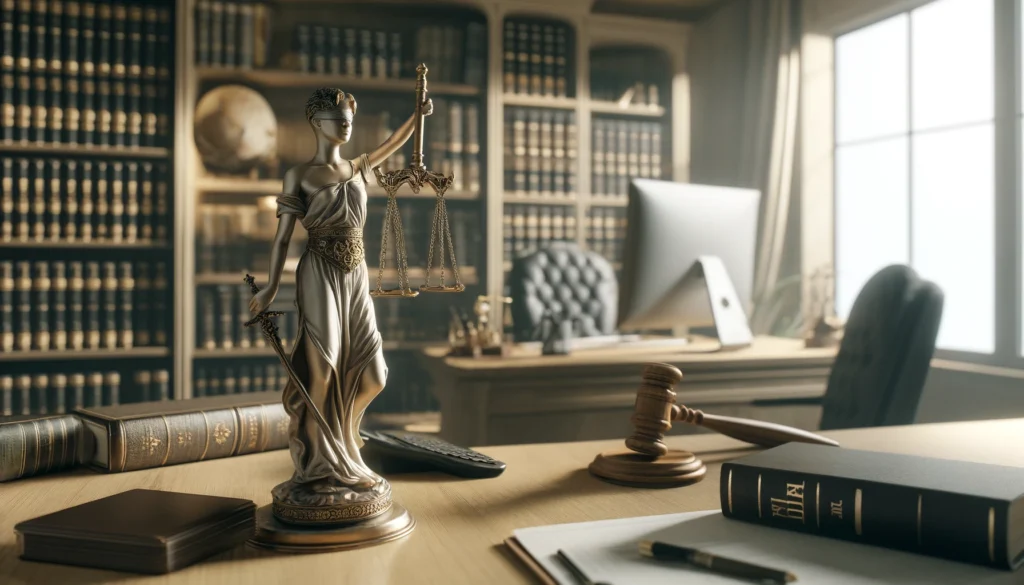
Navigating the New Frontier: Embracing AI in Legal Work
The legal field is undergoing a seismic shift as artificial intelligence (AI) is increasingly integrated into various aspects of legal practice. This technological evolution, driven by tools like ChatGPT and other Large Language Models (LLMs), is reshaping traditional methods.
ChatGPT, developed by OpenAI, represents a cutting-edge AI application that can understand and generate human-like text based on prompts. It is part of a broader trend where AI is being employed to enhance efficiency and accuracy in legal writing tasks. This development underscores the growing importance and potential of AI in legal work, particularly in crafting compelling criminal appeal briefs.
The Art of Prompting: Crafting Effective Queries for ChatGPT
Understanding how to effectively communicate with AI is crucial for leveraging its capabilities. Prompts are essentially the building blocks that guide ChatGPT’s responses, and the quality of these prompts directly affects the output.
To obtain nuanced and targeted responses from ChatGPT, it is vital to master the art of prompting. Crafting effective queries often involves providing clear, specific, and detailed instructions to the AI. For example, a prompt like “Summarize the case law involving search and seizure” is less effective compared to “Provide a summary of the 2020 Supreme Court decisions on search and seizure that highlight contrasting judicial opinions.”
Examples of poorly-crafted prompts:
- “Tell me about case law.”
- “Write something on legal research.”
Examples of well-crafted prompts:
- “List the key principles established in the Miranda v. Arizona case and their implications on modern police practices.”
- “Draft an opening argument for a criminal appeal brief challenging evidence obtained through an unlawful search.”
Mastering these techniques can significantly enhance the utility of ChatGPT in legal writing, making it an invaluable asset for drafting criminal appeal briefs.
Also read:
Streamlining Legal Research: Utilizing ChatGPT for Case Law and Statutes
With effective prompting, ChatGPT can also expedite legal research, enabling quicker and more efficient retrieval of pertinent case law and statutory information. This is a game-changer for attorneys who often spend long hours scouring databases.
To maximize ChatGPT’s research capabilities, consider structuring queries for maximum relevance and precision. For instance, “Identify the landmark rulings in Fourth Amendment jurisprudence from the past two decades” ensures that the AI retrieves focused results.
However, relying solely on AI-sourced information is ill-advised. Always verify and supplement AI-generated data by cross-referencing it against authoritative legal databases such as Westlaw or LexisNexis. Combining AI suggestions with traditional research methods provides a more robust and trustworthy foundation for your arguments.
Also read:
Drafting and Editing Mastery: Enhancing Briefs with AI Assistance
Beyond research, ChatGPT excels in drafting and refining legal documents. This section will guide you through transforming initial drafts into polished submissions using AI assistance.
Start by using ChatGPT to draft skeletal outlines or suggest sentence structures. For example, instruct ChatGPT: “Draft an introductory paragraph for a criminal appeal brief focusing on procedural errors during sentencing.” Such prompts can generate content that forms the basis of your brief. Use the AI-generated content to structure your draft, ensuring all relevant points and legal arguments are covered.
For proofreading, prompt ChatGPT with tasks like “Review the section on factual background for consistency and clarity” or “Identify and suggest corrections for any grammatical errors in the legal argument section.” This dual approach of drafting and refining ensures that your briefs are both comprehensive and polished.
Also read:
Creative Prompts for Enhanced Brief Writing
Leveraging creative prompts can significantly improve the quality and persuasiveness of legal briefs.
For generating persuasive arguments, consider prompts like “Construct a persuasive argument for upholding the exclusionary rule in cases of unlawful searches,” which can provide compelling content to support your stance.
To optimize language and tone, use prompts such as “Rephrase this paragraph to maintain a formal legal tone while enhancing its clarity: [insert paragraph].” Ensuring consistency and clarity throughout your brief is critical, and prompts like “Check for coherence between these two sections: [insert sections]” can be highly effective.
Also read:
Managing Confidentiality and Ethical Considerations
While AI tools offer numerous benefits, they also introduce new risks, particularly concerning data privacy and ethics.
Ensure that any data shared with AI is anonymized to protect client confidentiality. Adhere to ethical guidelines, such as those from the American Bar Association, to ensure the responsible use of AI. Regularly review and update your practices to comply with evolving standards.
Also read:
Conclusion: The Future of Legal Writing with AI
In summary, the integration of AI, particularly ChatGPT, into legal writing marks the advent of a new era in legal practice. By mastering effective prompting, streamlining research, and enhancing drafting and editing processes, legal professionals can harness AI’s full potential. The legal landscape is evolving, and those who embrace AI tools will be at the forefront of this transformation.
Also read:
Quick Reference: Must-Know Prompts and Tips
- Effective Prompt: “Provide a summary of [specific case] stating its impact on [legal principle].”
- Tailored Query: “Generate a list of precedents supporting [argument].”
- Refinement Task: “Proofread this section for clarity and conciseness: [insert text].”
Use these prompts and tips to maximize ChatGPT’s potential in your legal practice.


